20141104-van-houtryve-mw22-collection-001
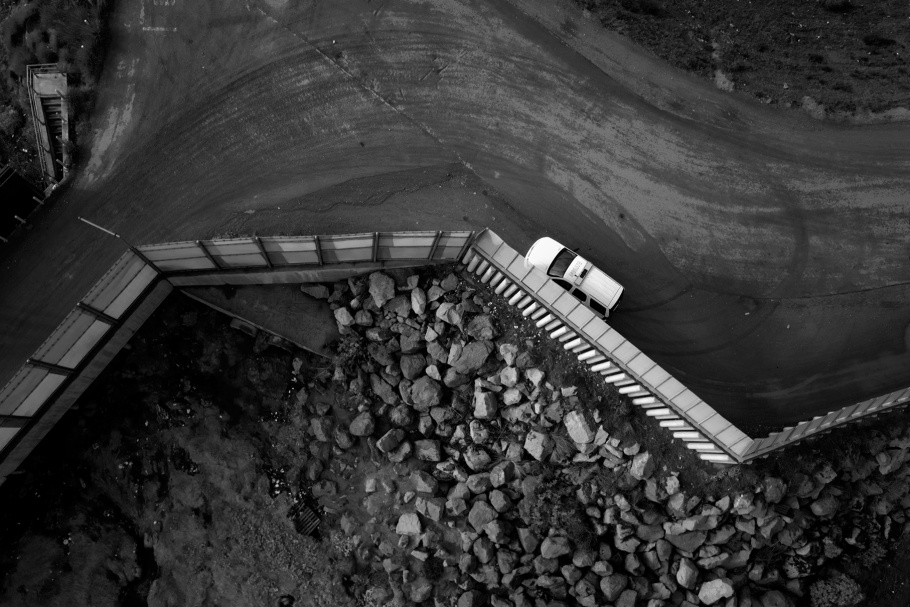
A U.S. Border Patrol vehicle in San Diego County, California.
U.S. Customs and Border Protection has been using Predator drones since 2005. A Freedom of Information Act lawsuit filed in 2012 revealed that the Customs and Border Protection lent its fleet of drones to other government entities—including the DEA, the FBI, the Texas Rangers, and local sheriff’s departments—nearly 700 times between 2010 and 2012.
20141104-van-houtryve-mw22-collection-002
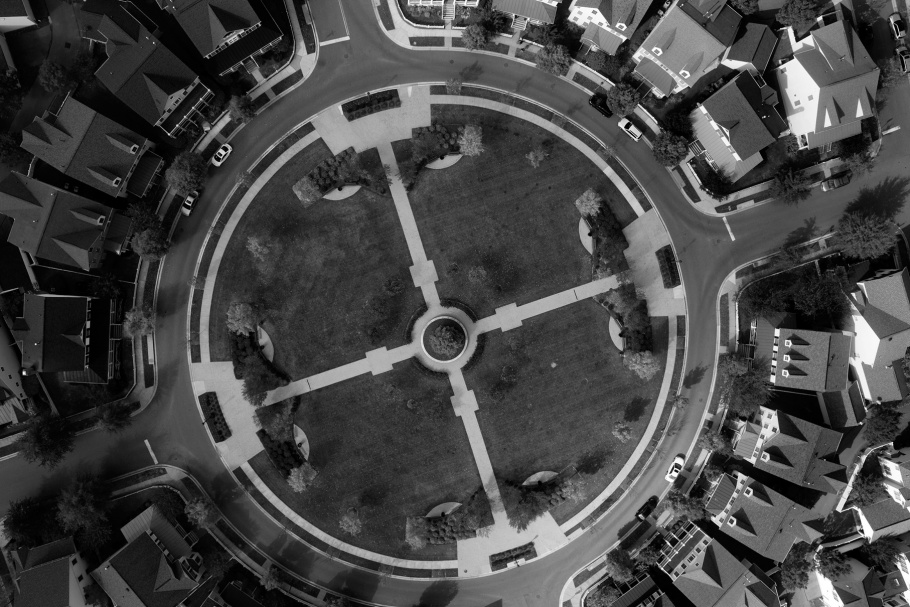
Residential homes surrounding a circular park are seen from above in Montgomery County, Maryland.
According to records obtained from the FAA, which issued 1,428 domestic drone permits between 2007 and early 2013, the National Institute of Standards and Technology and the U.S. Navy have applied for drone authorization in Montgomery County.
20141104-van-houtryve-mw22-collection-003
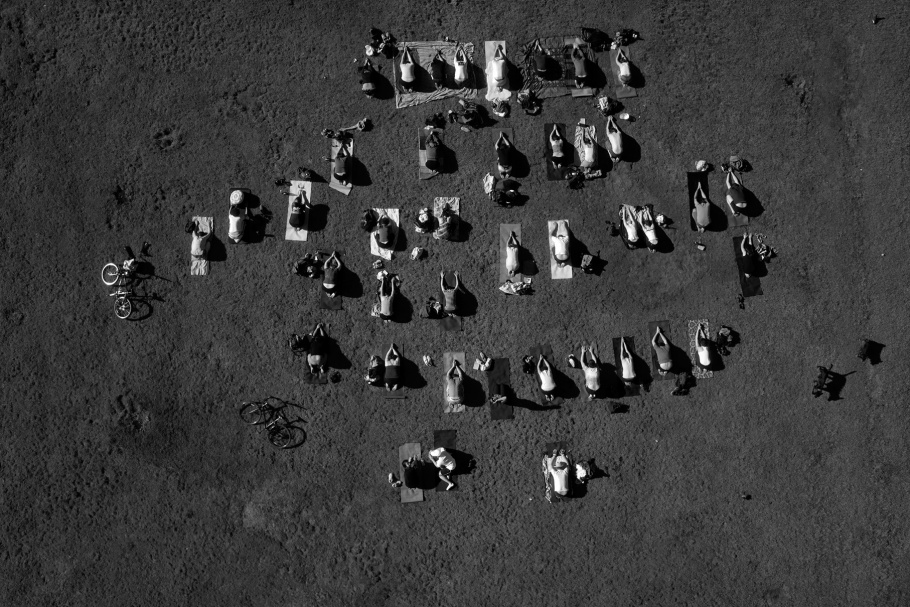
A public park is seen from above in San Francisco, California.
California is a major center for the development and manufacture of military UAVs—General Atomics builds its Predators and Reapers in the state—and the Bay Area in particular is a hub of the expanding consumer-drone market.
20141104-van-houtryve-mw22-collection-004
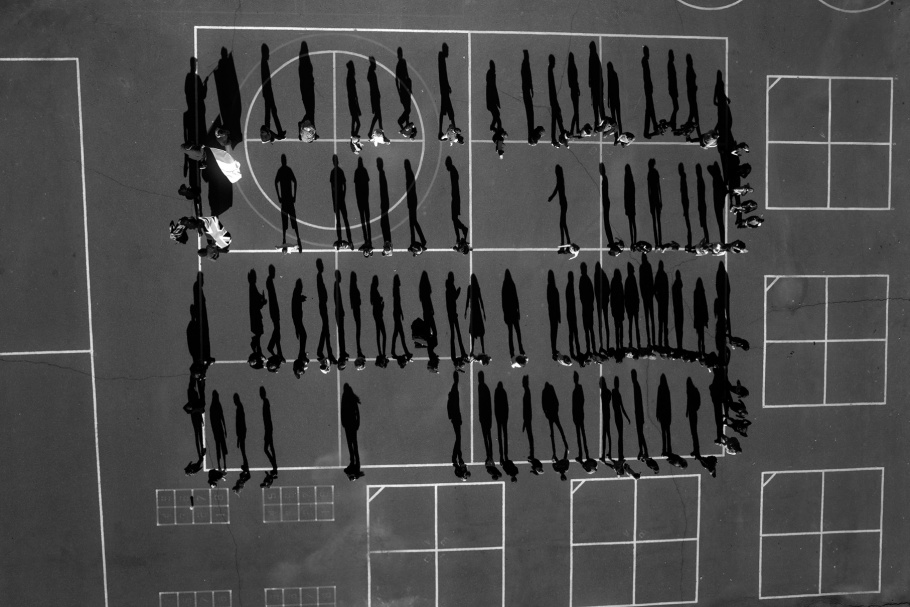
Students are seen in a schoolyard in El Dorado County, California.
In 2006, a drone strike on a religious school in the village of Chenegai reportedly killed up to 69 Pakistani children.
20141104-van-houtryve-mw22-collection-005
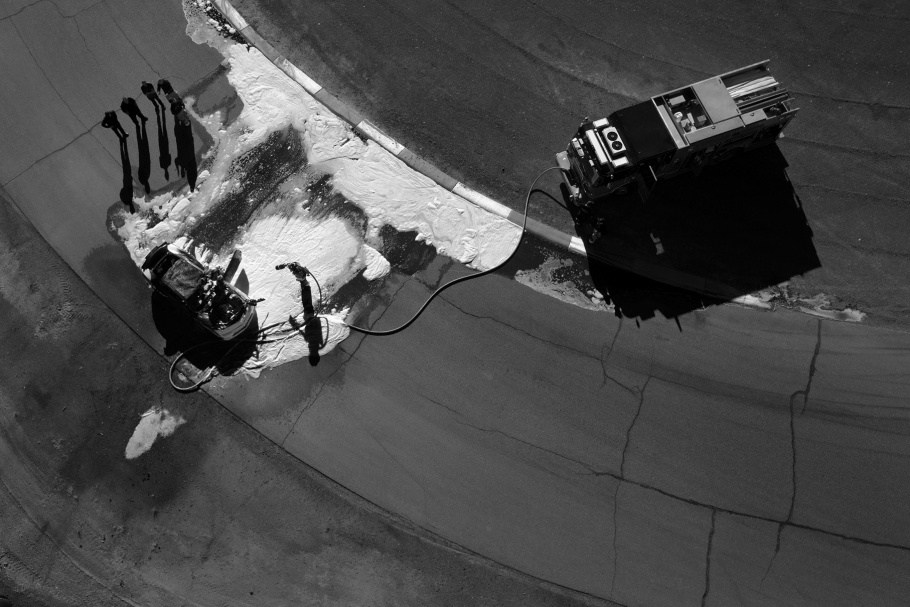
A fire truck and crew respond to a car fire in the Gila River Indian Community, Maricopa County, Arizona.
U.S. drone operators are known to engage in “double-tap” strikes, in which consecutive rounds of missiles are fired on the same target, with the second round intended to kill those who respond to the first. The London-based Bureau of Investigative Journalism documented at least five such strikes in Pakistan in 2012.
20141104-van-houtryve-mw22-collection-006
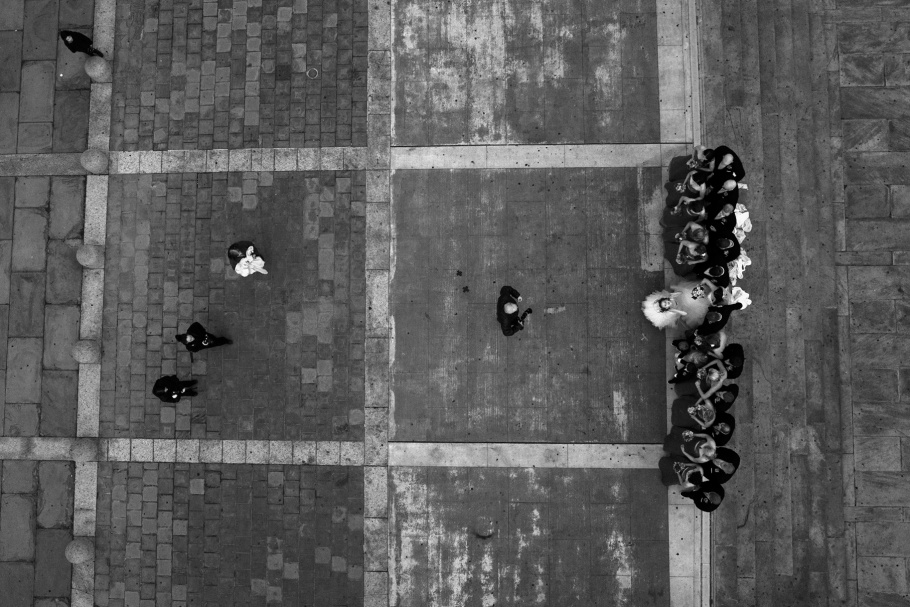
A wedding in Central Philadelphia, Pennsylvania.
In December 2013, a U.S. drone reportedly struck a wedding in Radda, in central Yemen, killing 12 people and injuring 14.
20141104-van-houtryve-mw22-collection-007
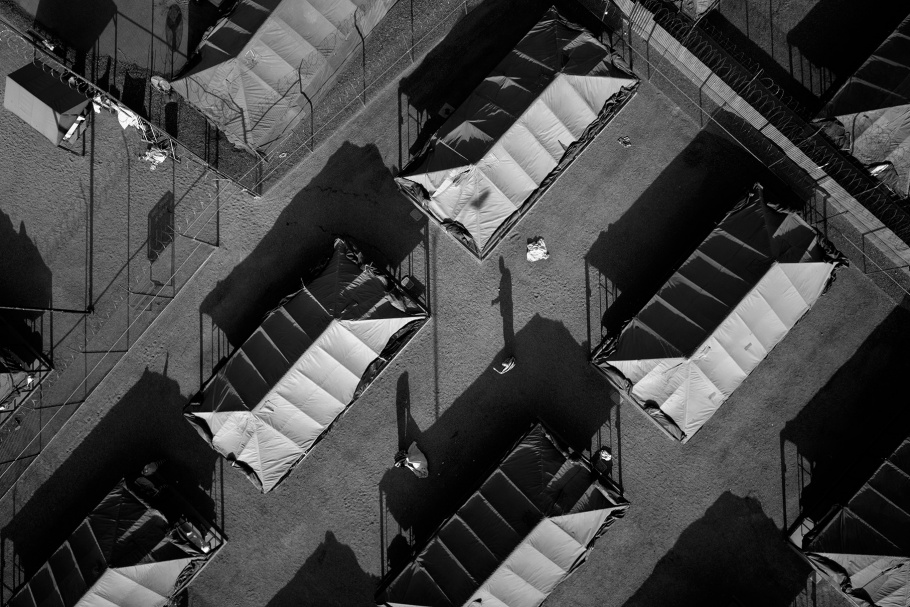
“Tent City” jail in Maricopa County, Arizona.
Sheriff Joe Arpaio announced in 2013 that he planned to purchase two surveillance drones for the facility, which is already outfitted with perimeter stun fences, four watchtowers, and a facial-recognition system.
20141104-van-houtryve-mw22-collection-008
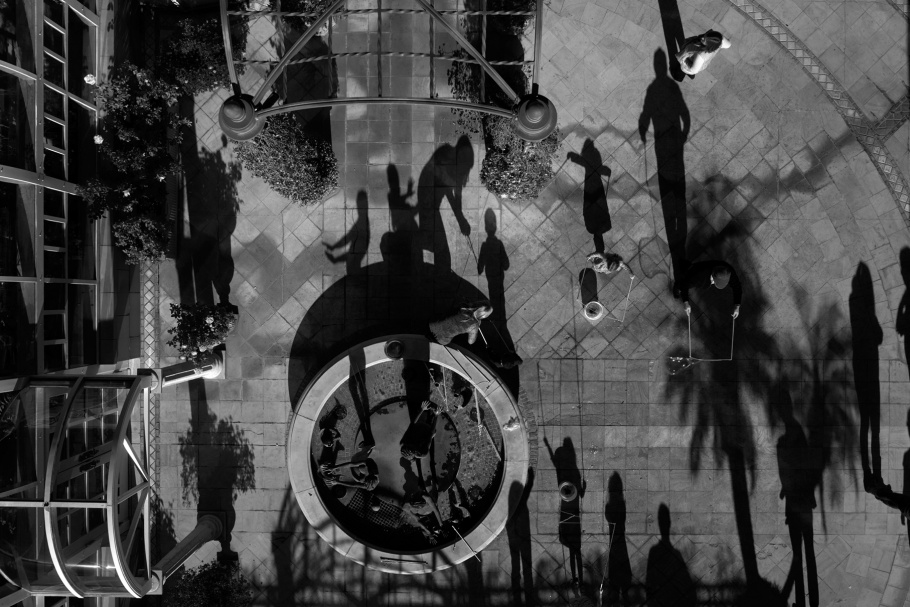
Children play at a birthday party in Sacramento County, California.
In September 2014, California governor Jerry Brown vetoed a bill that would have required police to obtain warrants for surveillance by drone.
20141104-van-houtryve-mw22-collection-009
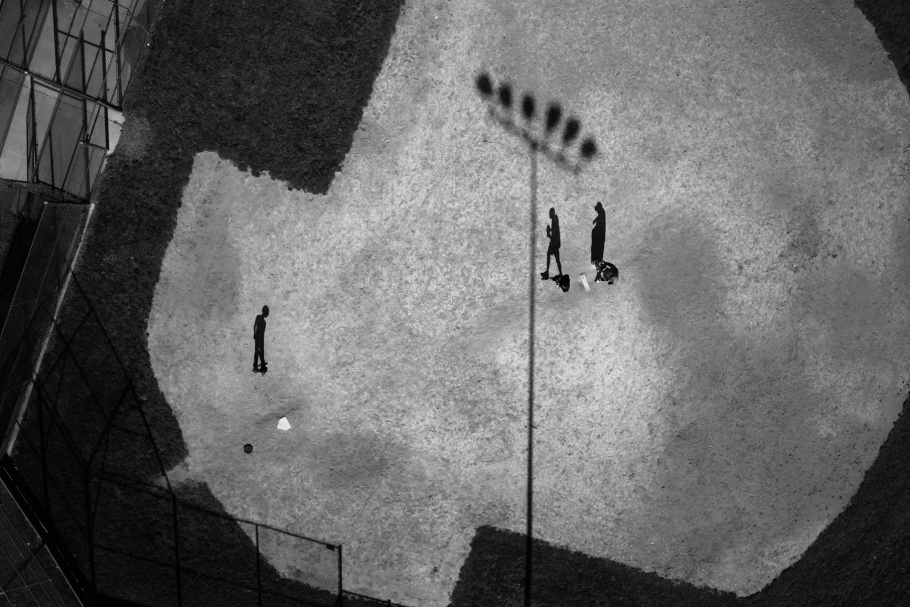
Baseball practice in Montgomery County, Maryland.
Montgomery County officials purchased four drones in 2014 to test how they might be of use to police and firefighters.
20141104-van-houtryve-mw22-collection-010
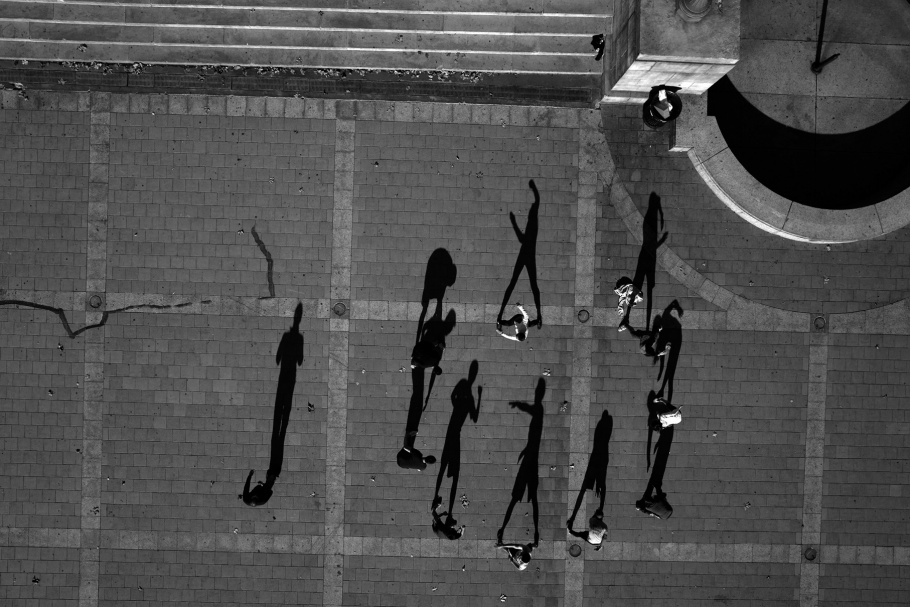
People exercising in central Philadelphia, Pennsylvania.
As an unnamed senior U.S. government official said to the New York Times in May 2012, “three guys doing jumping jacks” might for the CIA constitute sufficient evidence of a terrorist training camp—an allusion to policies whereby unidentified persons overseas who exhibit so-called signature behaviors are targeted in “signature strikes.”
20141104-van-houtryve-mw22-collection-011
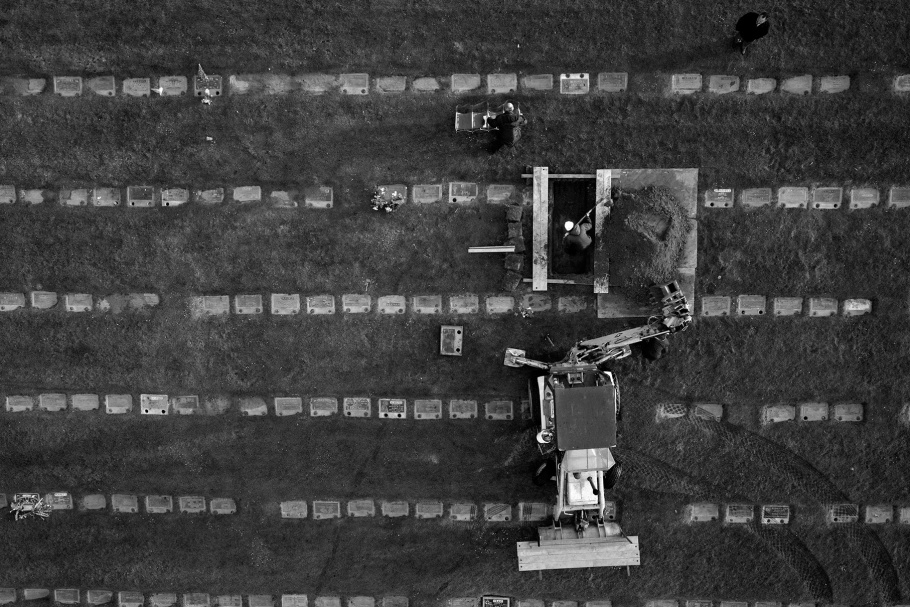
Grave diggers prepare for a funeral in Colma, California.
In 2009, a drone strike on a funeral in South Waziristan reportedly killed 60 Pakistani civilians.
20141104-van-houtryve-mw22-collection-012
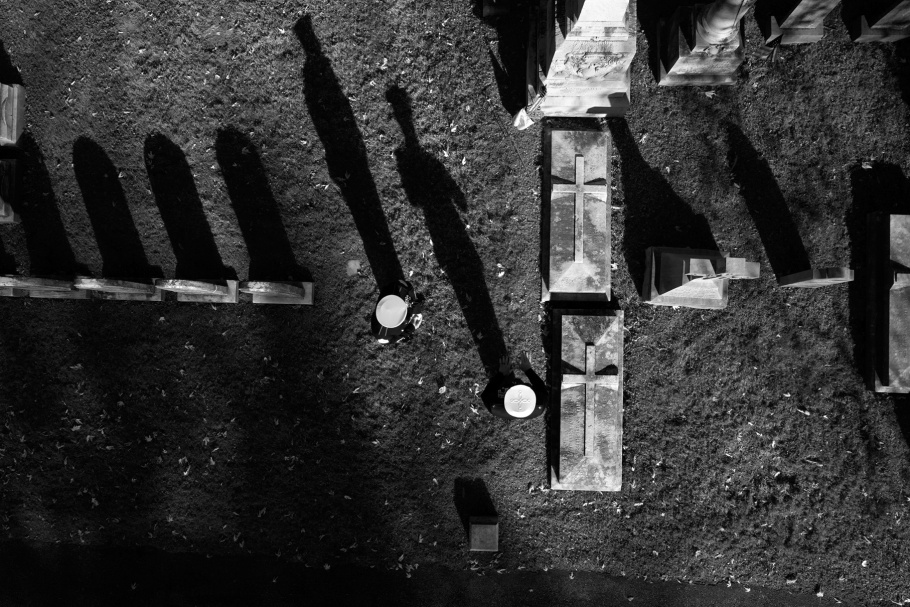
U.S. Marines in Philadelphia prepare for a wreath-laying ceremony in observance of Veterans Day.
In June 2012, a drone strike in Barmal, South Waziristan reportedly killed 10 people during the funeral prayers for the brother of a Taliban commander.
20141104-van-houtryve-mw22-collection-013
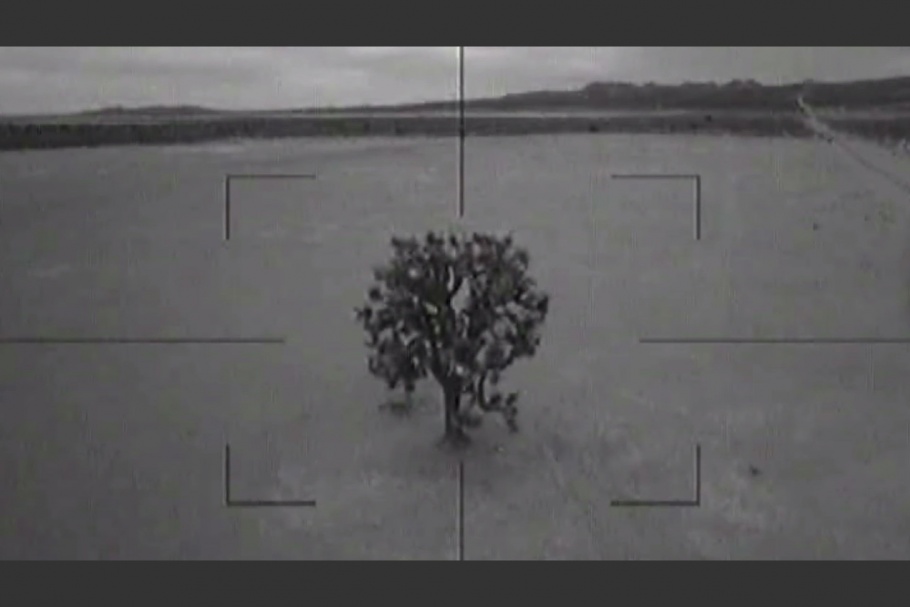
Still image from American Sky, 2014.
Running time: 18 minutes.
Most Americans have been seen by drones at this point, even if they have never looked up and noticed a drone themselves. Using footage collected by the artist's drone above the United States during 2013 and 2014, the video aims to draw attention to the changing nature of the American sky.
The video was supported, in part, by a grant from the Pulitzer Center on Crisis Reporting.
Tomas van Houtryve is a photographer, artist, and author, who engages with critical contemporary issues around the world. Initially a student in philosophy, Van Houtryve developed a passion for photography while attending an overseas university program in Nepal. Upon graduation, he devoted himself fully to photojournalism, starting out with the Associated Press in Latin America. Van Houtryve left Associated Press in 2003 to concentrate on large-scale personal projects, including documenting the Maoist rebellion in Nepal and a seven-year project on the last countries where the Communist Party remains in power: China, Cuba, Laos, Nepal, North Korea, and Vietnam. His first monograph, Behind the Curtains of 21st Century Communism, was published in spring 2012. Van Houtryve is a member of VII Photo. When not traveling, he is based in Paris.
Tomas van Houtryve
In October 2012, a drone strike in northeast Pakistan killed a 67-year-old woman picking okra outside her home. At a U.S. Congressional hearing on October 29, 2013, held in Washington, D.C., the woman’s 13-year-old grandson, Zubair Rehman, spoke to a group of five lawmakers. “I no longer love blue skies,” said Rehman, who was injured by shrapnel in the attack. “In fact, I now prefer gray skies. The drones do not fly when the skies are gray.”
According to strike reports complied by Human Rights Watch and Amnesty International, Zubair Rehman’s grandmother is one of several thousand people killed by covert U.S. drone strikes since 2004. Although we live in the most media-connected age in history, the public has scant visual record of the drone war and its casualties.
In response, I decided to attach my camera to a small drone and travel across America to photograph the very sorts of gatherings mentioned in strike reports from Pakistan and Yemen —weddings, funerals, groups of people praying or exercising. I made a list of “targets” to observe from the sky by reading hundreds of these reports. I also used a map of drone flights in the United States authorized by the Federal Aviation Administration (FAA) that had recently become public due to a Freedom of Information Act lawsuit by the Electronic Frontier Foundation. Guided by these FAA records, I sent my camera over places where domestic drone use had been approved, including prisons, oil fields, and the U.S.-Mexico border.
By creating these images, I aim to draw attention to the changing nature of personal privacy, surveillance, and contemporary warfare. As Albert Camus said, “By definition, a government has no conscience. Sometimes it has a policy, but nothing more.” In many ways, drones, particularly those used by the military, are the ultimate representation of delivering a policy without conscience, without empathy. As more drones fill the sky, we should consider how this technology will be used and experienced. Will the sight of drones overhead eventually seem as ordinary as an airplane or bird? Or will people start wishing for gray skies like Zubair Rehman?
—Tomas van Houtryve, November 2014